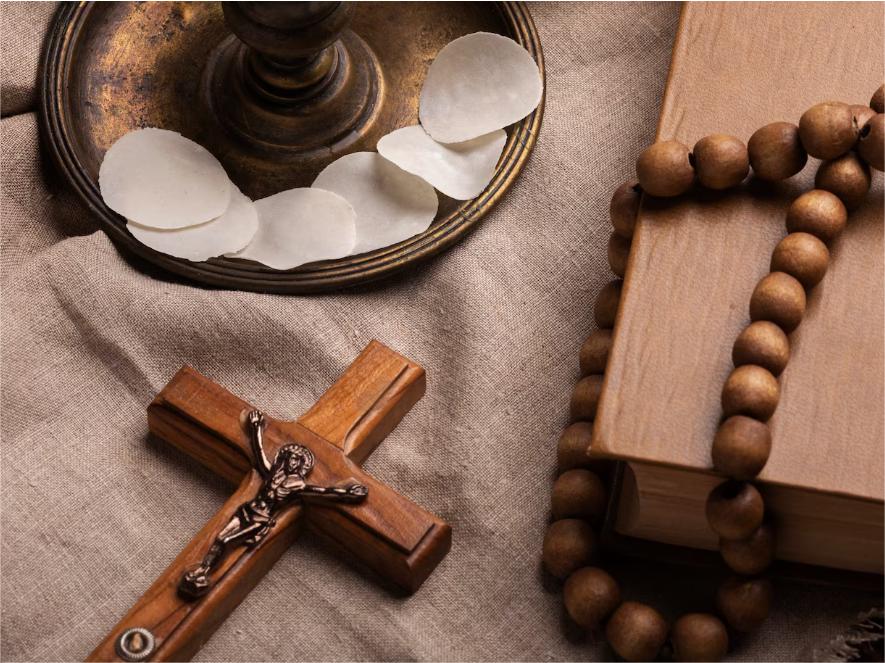Why Is the Cross Associated with Easter?
Easter is a major celebration for Christians, honoring the resurrection of Jesus Christ. Among all the symbols linked to this season, the cross stands out as a clear and powerful sign. It connects directly to the story of Jesus' crucifixion and resurrection, carrying deep spiritual and cultural weight for believers across the world.
How Did the Cross Become a Symbol of Easter Victory?
The link between the cross and Easter begins with the crucifixion. On Good Friday, Christians remember the day Jesus was nailed to a cross at Golgotha. In Roman times, the cross was a brutal method of execution, meant to bring pain and public shame. For Christians, it became a sign of sacrifice and love, as Jesus gave his life for the forgiveness of sins.
Easter Sunday celebrates the next chapter of that story—the resurrection of Jesus. His rising from the dead transformed the cross from a symbol of suffering into a sign of hope and triumph. The empty cross, often shown without the figure of Christ, reminds believers of life after death and the promise of eternal salvation.

Ways the Cross Is Used During Easter
During the Easter season, the cross plays a central role in both religious and cultural practices, symbolizing the crucifixion and resurrection. Here are some common examples:
- Religious Services – Churches place crosses near the altar or in visible areas during Holy Week and Easter.
- Easter Decorations – Crosses made of wood, metal, or flowers are often used to decorate homes and church spaces.
- Processions and Reenactments – In some communities, people carry crosses during processions that reflect the events of the Passion.
- Easter Vigil and Lighting – The Paschal candle, often marked with a cross, is lit as a sign of Christ's light overcoming darkness.
- Garden Crosses – Flower-covered crosses may be placed outdoors to represent renewal and hope.
- Cross Necklaces and Jewelry – Many people wear cross necklaces during Easter as a personal reminder of faith. Some may choose special designs, such as a Celtic Cross Necklace, which blends Christian symbolism with cultural heritage.
The cross, as a symbol of sacrifice and redemption, holds profound meaning for Christians during Easter. It serves as a visual and tangible representation of the core beliefs of the faith, emphasizing both the suffering and triumph of Jesus Christ.

Different Christian Traditions and the Cross
The way the cross is shown at Easter can vary depending on the church tradition:
- Catholic and Orthodox Churches – Crucifixes, which include the figure of Christ, are central. They emphasize the reality of Jesus' suffering and sacrifice.
- Protestant Churches – Many display a plain, empty cross to highlight the resurrection. The absence of Christ's figure points to his victory over death.
- Shared Purpose – While the appearance may differ, both traditions keep the focus on the sacrifice of Good Friday and the triumph of Easter Sunday.
The Living Cross: A Testament to Faith and Redemption
The association between the cross and Easter is a tapestry woven with layers of meaning—sacrifice, redemption, triumph, love, and forgiveness. As Easter unfolds, the cross emerges not merely as a historical artifact but as a living symbol that resonates with the deepest recesses of the Christian narrative. It stands as a testament to the enduring power of faith, inviting believers to find solace, inspiration, and profound meaning in the transformative journey from the crucifixion to the resurrection.
5 FAQs about the Cross and Easter
Q1: Is the cross only important to Easter?
A: No. While the cross is central to Easter celebrations because it represents Jesus' crucifixion and resurrection, it is also a core symbol of Christianity year-round, appearing in churches, jewelry, and art.
Q2: Why do some crosses look different?
A: Different Christian traditions use various cross designs—such as the Latin cross, Greek cross, or Celtic cross—each with its own history and meaning. Some focus on Jesus' suffering, while others highlight victory over death.
Q3: Was the cross always a Christian symbol?
A: No. In ancient times, the cross was used as a method of execution in the Roman Empire. It became a Christian symbol only after Jesus' crucifixion and resurrection transformed its meaning from punishment to salvation.
Q4: Why is the cross displayed on Good Friday and Easter Sunday?
A: Good Friday commemorates Jesus' crucifixion, making the cross a solemn reminder of his sacrifice. On Easter Sunday, it symbolizes victory, hope, and eternal life through the resurrection.
Q5: Do all Christians use the cross in Easter celebrations?
A: Most Christian traditions include the cross in Easter observances, but the emphasis varies. For example, some Protestant churches focus more on the empty cross (symbolizing resurrection), while others use crucifixes (depicting Jesus on the cross) to reflect on his suffering.



